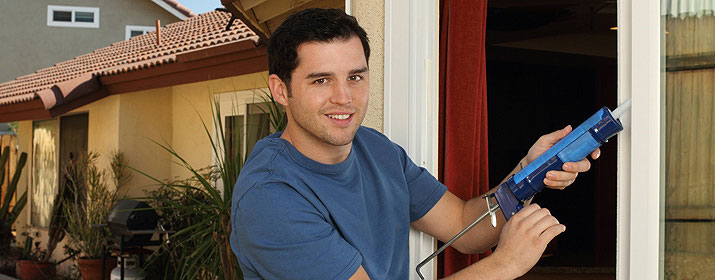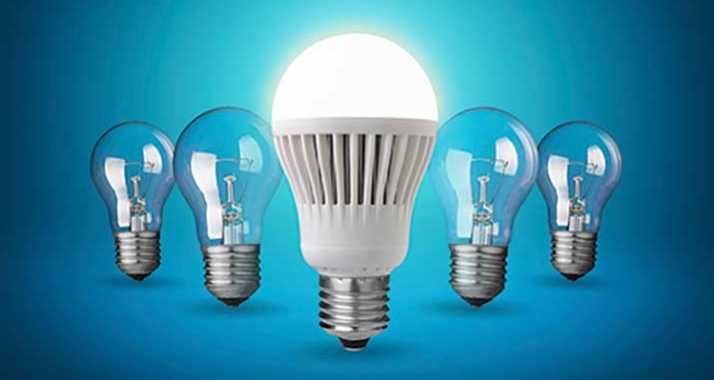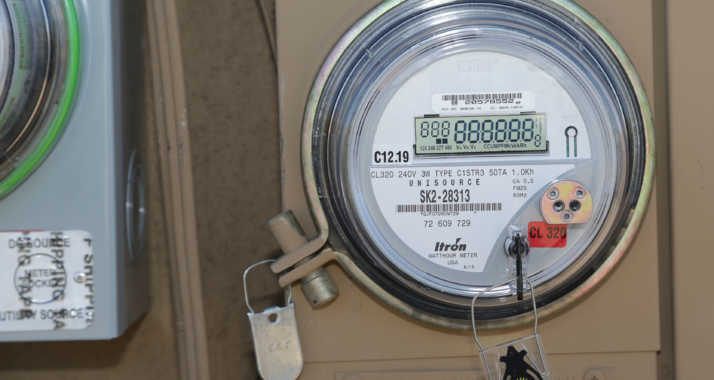
Shorter days and chillier morning air signal that colder weather will soon arrive. Is your home ready for winter? Don’t let heated air – or money – escape your home. Stay warm and comfortable while reducing your home heating costs with these sensible and affordable weatherization tips from Tucson Electric Power.
1. Change your filter
ENERGY STAR® recommends changing your air filter at least every three months or as needed if it’s dirty. Installing a new furnace filter on a regular basis improves indoor air quality and helps your HVAC system work more efficiently. It also extends the life of your system and reduces repairs and maintenance. Average cost: $10-$25 each depending on type and brand.
“This is probably one of the most important things that homeowners can do themselves to reduce their heating and cooling costs,” said Edith Garcia, a TEP Program Manager who specializes in home efficiency. “Note the next replacement date on your calendar and buy a couple of filters so that you always have one handy when it’s time to change it.”
2. Insulation
Adding extra insulation to walls and the ceiling will help you maintain a comfortable temperature for less energy. Be sure to choose the correct insulation for your climate zone (Arizona has five zones). Insulation with a higher “R-Value” is more effective at preventing heat loss. By adding insulation, you can cut your heating/cooling costs up to 20 percent, according to ENERGY STAR®. Average cost: $35 for a 39.2 ft. roll.
3. Door Sweeps
Did you know that a gap as tiny as 1/8-inch around your doors can let in as much air as a small window open a few inches? Adding door sweeps to the bottom of your exterior doors provides a tight seal against drafts and keeps out moisture, dust and pests. Average cost: $10
4. Weather-stripping
Another inexpensive way to prevent outside drafts is to install weather-stripping to seal cracks or gaps around doors and windows. This also improves air quality and prevents bugs from finding their way inside during cooler weather. To determine if you need new weather-stripping, close a window or door on a piece of paper. If the paper can be moved easily, you should add weather-stripping. Average cost: $3.50 for 10 feet.
5. Electrical outlet seals
Even the tiniest cracks from outside walls can let in cold air and allow heat to escape. For less than a few dollars, you can add foam sealing gaskets to electrical outlets and switches on outside walls to reduce heat loss by two percent or more. Average cost: $2 for a 2-pack
6. Caulk and foam
To seal gaps and cracks around the non-moving parts of your windows, use caulk or expanding foam sealants for larger gaps. Walk around the outside of your home to identify areas with dried, cracking or missing caulk and reapply caulking to those spots. Average cost: $8 for a 10.1 oz. tube.
7. Water heater insulation
Water heaters are often located in a garage or large utility room that may be cooler than the rest of your home. Uninsulated tanks or those with an R-value less than 24 lose heat and are less efficient. Insulation blankets help keep the water in your tank warm. A $20 water heater blanket can reduce your standby heat losses by 25 percent or more, according to Energy.gov. Also consider insulating any exposed hot water pipes. You won’t have to wait as long for the water to heat up, which will save energy. Average cost: $25 for an insulation blanket that fits a 60-gallon tank.
8. Plastic window coverings
The use of plastic shrink-to-fit plastic window coverings for select windows can prevent cold, uncomfortable drafts and heat loss. They also help reduce moisture buildup on the window due to condensation. Window film covers are inexpensive and easy to install. Average cost: $12 for an 84” x 120” film.
9. Lighting
Home lighting accounts for about 10 percent of your electric bill. Swap out any remaining incandescent light bulbs for LEDs. They use up to 90 percent less energy than standard bulbs and last up to 25 times longer. TEP offers discounted LED bulbs through our ENERGY STAR Lighting Program. Average cost: $5 for a 4-pack of A19 bulbs.
“Homeowners don’t have to entirely overhaul their environment to lower their energy costs,” Garcia said. “Sometimes, taking little steps can add up to big savings.”
Working with other partners, TEP also offers qualified low-income customers free home weatherization assistance. Some of the improvements available through this program include window caulking, weather-stripping, and insulation upgrades for attics, walls, water heaters and piping.






